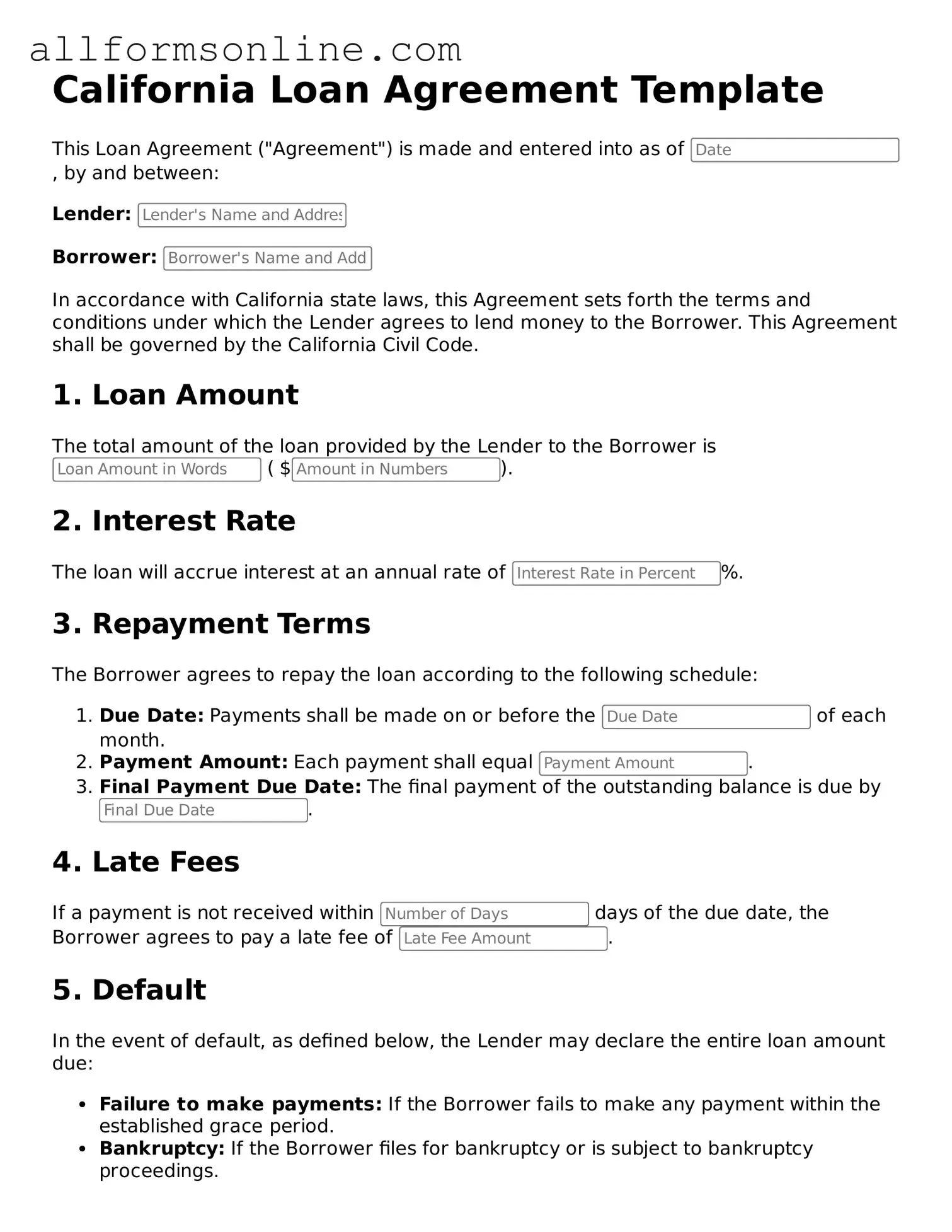What is a California Loan Agreement form?
A California Loan Agreement form is a legal document that outlines the terms and conditions under which one party (the lender) provides a loan to another party (the borrower). This form typically includes details such as the loan amount, interest rate, repayment schedule, and any collateral involved in the transaction. It serves to protect both parties by clearly defining their rights and responsibilities.
Who needs to use a California Loan Agreement?
This form is essential for anyone lending or borrowing money in California, whether it’s for personal loans, business loans, or real estate transactions. It is especially important when the loan amount is significant or if the parties do not have an established relationship, as it helps to prevent misunderstandings and disputes.
What are the key components of a California Loan Agreement?
A typical California Loan Agreement includes several important components: the names of the lender and borrower, the loan amount, the interest rate, the repayment terms, any fees or penalties for late payments, and details about collateral if applicable. Additionally, it may include clauses regarding default, governing law, and dispute resolution procedures.
Is it necessary to have a lawyer review the Loan Agreement?
While it is not legally required to have a lawyer review a Loan Agreement, it is highly recommended, especially for larger loans or complex agreements. A legal professional can ensure that the terms are fair and compliant with California law, which can help avoid potential legal issues in the future.
Can a Loan Agreement be modified after it is signed?
Yes, a Loan Agreement can be modified after it is signed, but any changes must be documented in writing and signed by both parties. This process is known as an amendment. It is important to ensure that any modifications do not conflict with the original terms and that both parties agree to the new terms.
What happens if the borrower defaults on the loan?
If the borrower defaults, meaning they fail to make payments as agreed, the lender may have the right to take specific actions as outlined in the Loan Agreement. This could include charging late fees, accelerating the loan (demanding full repayment), or taking possession of collateral if it was pledged. The specific remedies available will depend on the terms of the agreement and applicable laws.
Is the Loan Agreement enforceable in court?
Yes, a properly executed Loan Agreement is generally enforceable in court, provided it meets the legal requirements for contracts in California. This includes having the necessary elements such as offer, acceptance, consideration, and the capacity of both parties to enter into the agreement. If a dispute arises, the agreement can serve as evidence in legal proceedings.
Are there any state-specific regulations for Loan Agreements in California?
Yes, California has specific laws governing loans, including interest rate limits and disclosure requirements. For instance, certain consumer loans may be subject to the California Finance Lenders Law, which regulates lending practices. It is important to be aware of these regulations to ensure compliance and avoid potential legal issues.
Where can I obtain a California Loan Agreement form?
California Loan Agreement forms can be obtained from various sources, including online legal document services, law offices, and state government websites. It is advisable to use a reputable source to ensure that the form is up-to-date and compliant with California laws. Customizing a template to fit specific needs can also be beneficial.
